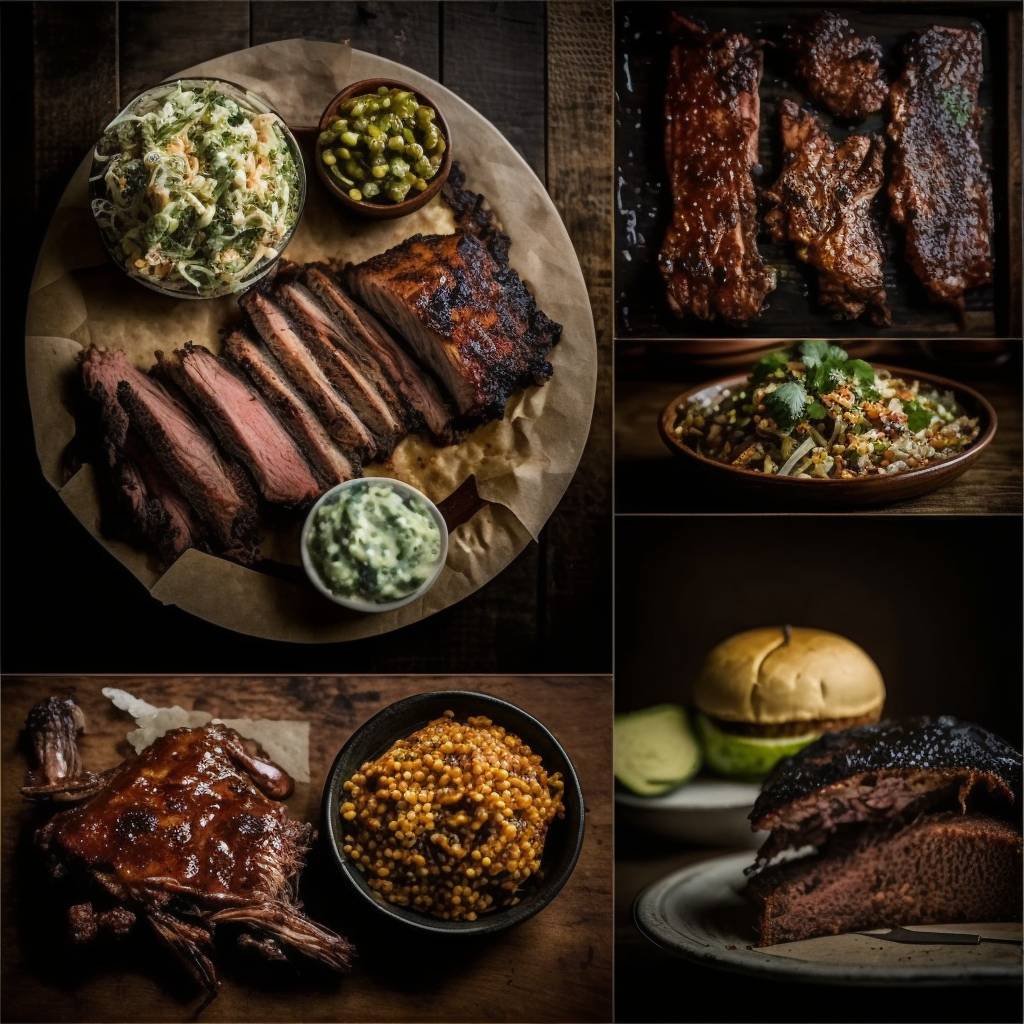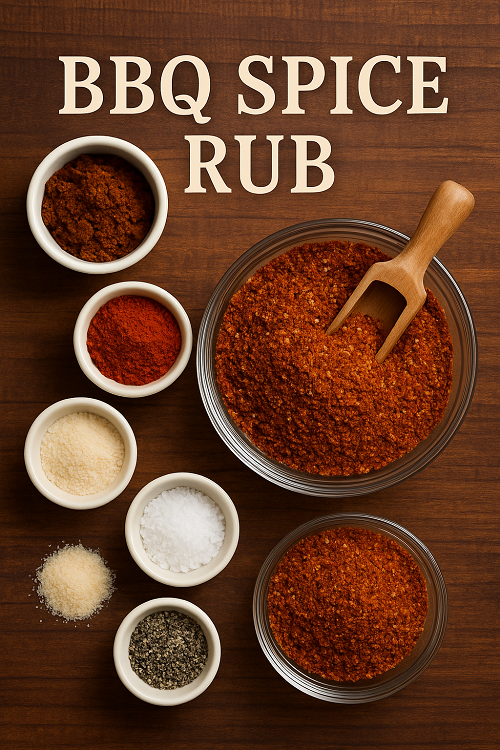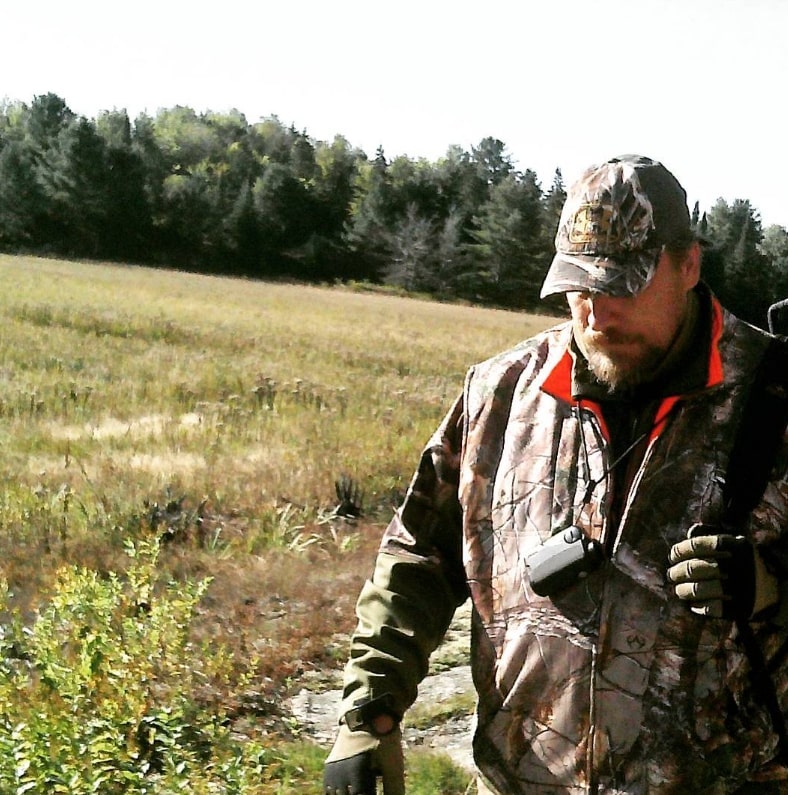BBQ Season


Why Your BBQ Deserves a Superior Rub
As BBQ Season approaches, remember that barbecue isn’t just about smoke and flame—it’s about flavor. And at the core of world-class BBQ is a perfectly balanced spice rub. Whether you’re working with pork ribs, beef brisket, or grilled veggies, the right BBQ rub can elevate your cookout from average to unforgettable.
In this comprehensive guide, you’ll get more than just a basic BBQ rub recipe. We’ll dive into the science of spice blends, discuss how different regions approach BBQ rubs, and provide customizable formulas for any protein. You’ll also learn insider pitmaster tips to apply your rub for maximum flavor and bark development.

Core Ingredients and Their Flavor Roles
Every great BBQ rub strikes a balance of sweet, savory, smoky, and spicy. Here’s a breakdown of the essential components:
- Sugar (brown, white, turbinado): Adds sweetness and helps form a caramelized crust.
- Salt: Enhances flavor and draws out moisture for better spice penetration.
- Paprika (sweet, smoked): Adds color and earthy depth.
- Chili Powder/Cayenne: Provides heat and kick.
- Garlic Powder: Adds savory umami depth.
- Onion Powder: Rounds out the base flavor.
- Black Pepper: Brings sharpness and balance.
- Cumin: Offers warm, smoky depth (especially for beef).
Optional Add-Ins: Mustard powder, coriander, oregano, thyme, chipotle, coffee grounds, cinnamon.
Classic BBQ Spice Rub Recipe
Ingredients (Yields ~1 Cup)
- ¼ cup brown sugar (light or dark)
- 2 tbsp smoked paprika
- 1 tbsp kosher salt
- 1 tbsp black pepper
- 1 tbsp chili powder
- 1 tsp garlic powder
- 1 tsp onion powder
- ½ tsp cayenne pepper (adjust to taste)
- 1 tsp ground cumin
Instructions
- Combine all ingredients in a bowl and mix well.
- Store in an airtight jar for up to 6 months.
- Apply generously to meat 30–60 minutes before cooking—or the night before for deep flavor.
Regional Variations
🔥 Memphis-Style Rub
- Heavy on paprika, dry finish, great for ribs.
- No sugar versions exist for dry ribs.
🔥 Texas-Style Rub
- Focuses on salt, pepper, chili powder, and cumin.
- Minimal sugar—perfect for brisket.
🔥 Carolina-Style Rub
- Vinegar-based sauces dominate, but rubs use mustard powder and celery salt.
- Excellent for pulled pork and shoulders.
🔥 Kansas City-Style Rub
- Sweet and spicy with bold color.
- Brown sugar, paprika, and chili powder base.
How to Apply a BBQ Rub Like a Pro
- Pat meat dry with paper towels—moisture prevents good rub adhesion.
- Use a binder (like yellow mustard or olive oil) for even sticking.
- Apply generously, especially on thick cuts.
- For best results, let it rest—refrigerate rubbed meat for 2–24 hours.
- Don’t rub it in—press gently to adhere.
🧠 Pro Tip: For slow smoking, apply rub the night before and wrap the meat to dry brine overnight.
Best Rubs by Meat Type
| Meat Type | Rub Suggestions |
|---|---|
| Pork Ribs | Sweet, smoky rub with brown sugar, paprika, and garlic. |
| Beef Brisket | Bold Texas rub: black pepper, salt, cumin, chili powder. |
| Chicken | Paprika, garlic, lemon zest, thyme. Add a bit of cayenne for kick. |
| Fish | Citrus zest, dill, white pepper, coriander. Avoid sugar-heavy rubs. |
Storage and Batch Prep
- Store in airtight glass jars in a cool, dark place.
- Label jars with date of preparation.
- Avoid humidity—it clumps your spices.
- Shelf Life: Up to 6 months for peak flavor.
- Mix large batches for convenience—just scale up the recipe.
DIY Custom Rubs: Experiment Like a Pitmaster
Here’s a formula to invent your own rubs:
- 40% Sugar
- 25% Salt
- 15% Paprika
- 10% Aromatics (garlic/onion)
- 10% Heat/Accent (cayenne, cumin, mustard)
Want to make it exotic? Try adding:
- Coffee grounds for earthy richness (great on beef)
- Dried citrus peel for chicken and fish
- Cocoa powder for a mole-inspired twist
Common Mistakes
- Too much sugar on high heat = bitter burn.
- Salting meat AND adding salty rub = overly salty results.
- Not letting rub set = weak bark development.
- Using expired spices = muted flavor profile.
BBQ Rub FAQs
Can I use a rub and a sauce together?
Yes. Use the rub before cooking, then glaze with sauce in the final 10–15 minutes to avoid burning the sugar.
Do I need to refrigerate the rub?
No, but store it in a cool, dry place to maintain potency.
What’s the best binder?
Plain yellow mustard is a favorite—adds tang and helps with adhesion without affecting flavor.
Can I use a rub on vegetables?
Absolutely. Try it on grilled corn, mushrooms, or potatoes.
The Secret in Your BBQ Season Arsenal
A great BBQ spice rub is more than just seasoning—it’s a flavor strategy. Whether you’re smoking ribs low and slow or searing steak over open flame, the right rub builds the bold, layered taste that defines barbecue.
Master the recipe, understand the ingredients, and start experimenting. Your grill will thank you—and so will your guests.
- 81
- 2072




2 Comments
[…] dive into a delicious Korean BBQ and hot pot recipe using wild game meat! This fusion dish combines the bold flavors of Korean […]
March 25, 2025 - 6:58 pm[…] like a perfectly grilled salmon. From its tender flakiness to the infusion of smoky flavors, this grilled salmon recipe promises to elevate your dining experience. Join me on this culinary adventure as we dive into the […]
March 25, 2025 - 7:06 pmComments are closed.